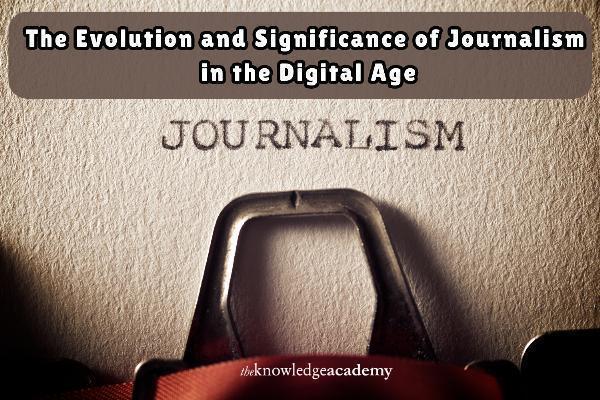 White Hat Link Building – Safe. Powerful. Long-Term.
White Hat Link Building – Safe. Powerful. Long-Term.
Conflict Management: Navigating Disagreements in the Workplace
Written by Muhammad Waliyullah » Updated on: June 17th, 2025

Conflict Management: Navigating Disagreements in the Workplace
Conflict is an inevitable part of any workplace. With diverse personalities, perspectives, and goals, disagreements are bound to arise. However, conflict doesn’t have to be destructive. When managed effectively, it can lead to growth, innovation, and stronger relationships within teams. This is where Conflict Management Training becomes essential, as it equips individuals with the skills and strategies needed to handle conflicts constructively.
This blog will explore the concept of conflict management, its importance, and practical strategies to handle conflicts in the workplace.
Understanding Conflict in the Workplace
Conflict occurs when two or more parties have incompatible goals, needs, or interests. In the workplace, these can manifest in various ways, such as differences in opinion, competition for resources, or clashes in working styles. While the term "conflict" often carries a negative connotation, it’s important to recognize that not all conflict is bad. Constructive conflict can lead to better ideas, improved processes, and a more dynamic work environment.
However, when conflict is left unresolved or mismanaged, it can escalate into something more serious, such as resentment, decreased productivity, or even a toxic work environment. This is why conflict management is a critical skill for leaders and team members alike.
The Importance of Conflict Management
Effective conflict management is crucial for maintaining a healthy workplace culture. Here are a few reasons why it matters:
Enhances Collaboration: When conflicts are addressed and resolved, it fosters an environment where team members feel safe to express their ideas and concerns. This open communication leads to better collaboration and teamwork.
Prevents Escalation: Minor disagreements can quickly spiral into larger issues if not addressed promptly. Effective conflict management helps to prevent small problems from becoming major disruptions.
Promotes Innovation: Constructive conflict encourages the exchange of different viewpoints, leading to more creative solutions and innovative ideas. A workplace that embraces healthy debate is more likely to stay competitive and adapt to change.
Improves Relationships: Handling conflicts with empathy and respect can strengthen relationships among colleagues. It builds trust and helps individuals understand each other's perspectives, leading to a more cohesive team.
Increases Productivity: When conflicts are managed effectively, team members can focus on their work without being distracted by unresolved issues. This leads to a more efficient and productive work environment.
Common Sources of Conflict in the Workplace
Understanding the common sources of conflict can help in anticipating and addressing issues before they escalate. Some typical sources include:
Resource Allocation: Limited resources, such as time, money, or equipment, can lead to conflicts as team members compete for what they need to do their jobs effectively.
Differences in Values or Goals: When team members have differing values, priorities, or goals, it can lead to disagreements on how to approach a project or make decisions.
Poor Communication: Misunderstandings or lack of clear communication often lead to conflicts. When team members aren’t on the same page, it can create frustration and confusion.
Personality Clashes: Different working styles and personalities can sometimes clash, leading to tension and conflict. For example, a detail-oriented person might struggle to work with someone who is more focused on the big picture.
Power Dynamics: Conflicts can arise when there are perceived or actual imbalances in power, such as between a manager and an employee or among team members with different levels of authority.
Strategies for Effective Conflict Management
Effective conflict management involves several key strategies that can help resolve disagreements and maintain a positive work environment. Here are some practical approaches:
Active Listening: One of the most important skills in conflict management is active listening. This means truly hearing what the other person is saying, without interrupting or planning your response while they’re speaking. By listening actively, you demonstrate respect for the other person’s perspective and can better understand their concerns.
Seek to Understand, Then to Be Understood: Before presenting your own viewpoint, make sure you fully understand the other person’s position. Ask questions, clarify points, and show empathy. Once you’ve understood their perspective, share your own in a calm and respectful manner.
Focus on Interests, Not Positions: In conflict, it’s easy to get stuck in defending positions. However, it’s more productive to focus on the underlying interests that are driving those positions. By understanding the root causes of the conflict, you can find solutions that satisfy both parties’ needs.
Collaborative Problem-Solving: Instead of viewing conflict as a win-lose situation, approach it as an opportunity for collaborative problem-solving. Work together to brainstorm solutions that address everyone’s concerns and find common ground.
Set Clear Expectations: To prevent conflicts from arising, it’s important to set clear expectations from the outset. This includes defining roles and responsibilities, establishing communication protocols, and setting realistic goals and deadlines.
Manage Emotions: Emotions can run high during conflicts, but it’s important to keep them in check. Practice emotional intelligence by recognizing your own emotional triggers and managing your responses. Encourage others to do the same, and strive to maintain a calm and professional demeanor.
Know When to Involve a Mediator: In some cases, conflicts may be too complex or emotionally charged to resolve on your own. In these situations, it may be helpful to involve a neutral third party, such as a mediator, to facilitate the resolution process.
Follow Up: After a conflict has been resolved, it’s important to follow up to ensure that the solution is working and that no lingering issues remain. This helps to reinforce the resolution and prevent the conflict from resurfacing.
Conclusion
Conflict management is not about avoiding disagreements or sweeping issues under the rug. It’s about addressing conflicts head-on in a way that promotes understanding, collaboration, and growth. By developing strong conflict management skills, you can contribute to a healthier, more productive workplace where team members feel valued, heard, and empowered to do their best work. Remember, conflict is not the enemy; unmanaged conflict is. When approached with the right mindset and tools, conflict can be a powerful catalyst for positive change.
Note: IndiBlogHub features both user-submitted and editorial content. We do not verify third-party contributions. Read our Disclaimer and Privacy Policyfor details.
Men's Journal is a rugged and refined lifestyle adventure travel, food and drink Get in touch [email protected] to find out how we can help you reach everyday, affluent, and adventure seeking consumers on Men's Journal
Copyright © 2019-2025 IndiBlogHub.com. All rights reserved. Hosted on DigitalOcean for fast, reliable performance.












